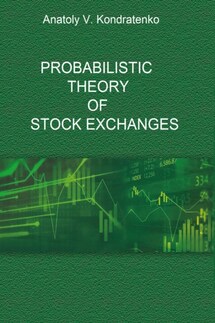Probabilistic Economic Theory - страница 13
This agents’ motion reflects the market process, which consists in changing continuously by the market agents their quotations. Note, we depicted in Fig. 1 a certain standard situation on the market, in which the buyer and the seller encountered deliberately at the moment of the time t>1 and began to discuss the potential transaction by a mutual exchange of information about their conditions, first of all the desired prices and the desired quantities of goods. During the negotiation, they continuously change these quotations until they agree on the final conditions of price p>E>>1 and quantity q>E>>1 , at the moment in time t>1>E. Such a simplest market model is applicable, for example, for the imaginable island economy in which once a year, a trade of grain occurs between a farmer and a hunter. They use the American dollar, $. To illustrate, the situation is described below in Fig. 1. Note that in this and subsequent pictures we use arrows to indicate the direction of the agent’s motion during the market process.
Up to the moment of t>1 , the market has been in the simple state of rest, there were no trading in it at all. At the moment of the time t>1, there appear the buyer and the seller of grain in it, which set out their initial desired prices and quantities of grain, p>1>D(t>1), p>1>S(t>1), and q>1>D(t>1), q>1>S(t>1). Points P and V in the graphs show the position of the buyer (purchaser) and seller (vendor) at the given instant of t>1. It is natural that the desires of buyer and seller do not immediately coincide, buyer wants low price, but the seller strives for the higher price. However, both desires and needs for reaching understanding and completing transaction remain, otherwise the farmer and the hunter will have the difficult next year. The process of negotiations goes on, the market process of changing by the agents their quotations continues. As a result, the positions of the market agents converge and, after all, they coincide at the moment in time of t>1>E, which corresponds to the trajectories’ intersection point E1 on the graphs.
Fig. 1. Trajectory diagram displaying dynamics of the classical two-agent market economy in the one-dimensional economic price space (above) and in the economic quantity space (below). Dimension of time t is year, dimension of the price independent variable P is $/ton, and dimension of the quantity independent variable Q is ton.
A voluntary transaction is accomplished to the mutual satisfaction. Further, the market again is immersed into the state of rest until the next harvest and its display to sale next year at the moment in time of t>2. Harvest in this season grew, therefore q>1>S(t>2)> q>1>S(t>1). In this situation, the seller is, obviously, forced to immediately set out the lower starting price, p>1>S(t>2)< p>1>S(t>1), while the buyer, seizing the opportunity, also reduced their price and increased their quantity of grain:







